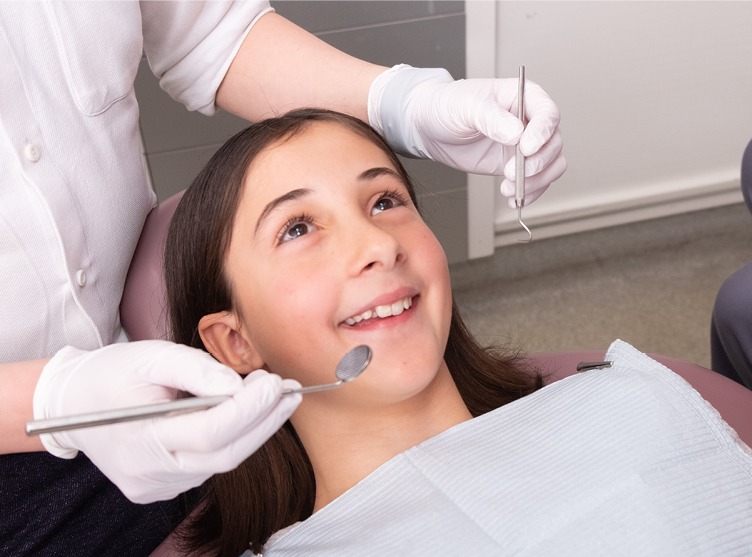Facts About Legacy Orthodontics Revealed
Facts About Legacy Orthodontics Revealed
Blog Article
How Legacy Orthodontics can Save You Time, Stress, and Money.
Table of ContentsThe Best Strategy To Use For Legacy OrthodonticsLegacy Orthodontics Fundamentals ExplainedGetting The Legacy Orthodontics To WorkThe Only Guide for Legacy OrthodonticsSee This Report on Legacy Orthodontics
At Advanced Orthodontics, we supply individuals with a alternative therapy experience. On top of that, we provide flexible treatment schedules, versatile payment choices and an enjoyable, satisfying experience. braces. Phone call ( 480) 357-4900 today for more info and timetable a consultation.An orthodontist is a dental practitioner educated to identify, avoid, and treat teeth and jaw irregularities. They fix existing conditions and are trained to identify problems that might create in the future. Orthodontists deal with people of all ages, from kids to adults. Individuals typically connect an ideal smile with healthiness.
Malocclusion, or misaligned teeth, can lead to oral issues, including dental cavity, gum illness, and challenging or excruciating chewing. But not everyone is born with straight teeth. If you have a poor bite or large rooms between your teeth, you may wish to get in touch with a dental expert concentrating on orthodontic care.
Not known Details About Legacy Orthodontics
( Image Credit Rating: DigitalVision/Getty Images) Orthodontists use fixed and removable dental gadgets, like dental braces, retainers, and bands, to change the setting of teeth in your mouth. Orthodontic treatment is for dental problems, consisting of: Uneven teethBite troubles, like an overbite or an underbiteCrowded teeth or teeth that are also much apartJaw misalignmentThe objective of orthodontic therapy is to improve your bite.
A healthy bite guarantees you can eat, eat, and talk effectively. While you could consider orthodontists as generally for youngsters or teens that need braces, they can deal with dental issues at any type of age. Orthodontists attend university, dental college, and orthodontic institution. After graduation, they invest 2 or 3 years in an orthodontic residency program.
All orthodontists are dental professionals, yet not all dental practitioners are orthodontists. Orthodontic residency programs use intensive, concentrated instruction for oral specialists. They concentrate on two locations: How to appropriately and safely move teeth How to effectively direct advancement in the teeth, jaw, and faceOnce an orthodontist has actually completed training, they have the choice to become board accredited.
The 8-Minute Rule for Legacy Orthodontics
Imbalance, or malocclusion, is one of the most common factor people see an orthodontist. It is genetic and is the outcome of size distinctions in between the top and lower jaw or in between the jaw and teeth. Malocclusion brings about tooth congestion, an irregular jaw, or uneven bite patterns. Malocclusion is typically treated with: Your orthodontist connects metal, ceramic, or plastic square bonds to your teeth.
If you have just minor malocclusion, you may be able to use clear dental braces, called aligners, rather than typical dental braces (https://www.cheaperseeker.com/u/legacyortho). Some individuals need a headgear to help relocate teeth right into line with stress from outside the mouth. After dental braces or aligners, you'll require to put on a retainer. A retainer is a customized device that keeps your teeth in position.
They're most frequently used on youngsters. They can develop added space in the mouth without needing to draw teeth. If you have a serious underbite or overbite, you could require orthognathic surgery (additionally called orthodontic surgical treatment) to extend or shorten your jaw. Orthodontists use cords, medical screws, or plates to support your jaw bone.
You may need to see an orthodontist if you have: Crowding or otherwise adequate space for all of your teethOverbite, when your top teeth come your bottom teethUnderbite, when your base teeth are too much forwardSpacing or problems with gapsCrossbite, which is when your top teeth fit behind your base teeth when your mouth is closedOpen bite or an upright space between your front bottom and upper teethMisplaced midline, when the center of your bottom and upper teeth don't align Dealing with a dental malocclusion can: Make biting, chewing, and talking easierImprove the symmetry of our face and your overall appearanceEase pain from temporomandibular joint problemsSeparate your teeth and make them much easier to clean, helping protect against dental caries or tooth cavities It's usually a dental practitioner that initially notifications misaligned teeth during a routine test.
The smart Trick of Legacy Orthodontics That Nobody is Discussing

During your first orthodontic examination, you'll likely have: An oral examPhotos taken of your face and smileDental X-raysPanoramic (360 degree) X-rays of your face and headImpressions to create mold and mildews of your teethThese tests will certainly assist your orthodontist recognize exactly how to wage your therapy. leesburg orthodontics. An orthodontist is a dental professional who's had training to treat your teeth and jaw
Orthodontists may do surgical procedure, exams,X-rays,and even more to assist you attain a more comfortable, healthier smile. An orthodontist is concentrated on your bite, so something like a cracked tooth would certainly be handled by a dental expert. Orthodontists are dentists yet not all dental experts are orthodontists. Orthodontists are concentrated on your bite, or the means your teeth meshed, and the straightness of your teeth.
Ever before wondered how celebs always seem to have perfectly aligned teeth? Orthodontists are oral professionals that focus useful site on dealing with irregularities in the teeth and jaws.
The 4-Minute Rule for Legacy Orthodontics

, orthodontists have a diverse toolkit at their disposal. These tried-and-true dental braces make use of a system of braces adhered to the teeth and attached by cords.
Clear aligners, like Invisalign, are a prominent choice for individuals looking for an extra very discreet therapy choice. These detachable trays are customized to progressively change the teeth's placement. Headgear might be made use of together with dental braces or aligners to apply added targeted pressures, specifically for remedying jaw inconsistencies. In situations of narrow jaws, palatal expanders can be utilized to create area for correct tooth positioning.
Report this page